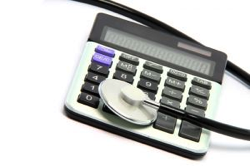
Moore’s Law predicts that every two years the cost of computing will fall by half. That is why we can be sure that tomorrow’s gadgets will be better, and cheaper, too. But in American hospitals and doctors’ offices, a very different law seems to hold sway: every 13 years, spending on U.S. health care doubles.
Health care accounts for one in five dollars spent in the United States. It’s 17.9 percent of the gross domestic product, up from 4 percent in 1950. And technology has been the main driver of this spending: new drugs that cost more, new tests that find more diseases to treat, new surgical implants and techniques. “Computers make things better and cheaper. In health care, new technology makes things better, but more expensive,” says Jonathan Gruber, an economist at MIT who leads a heath-care group at the National Bureau of Economic Research.
